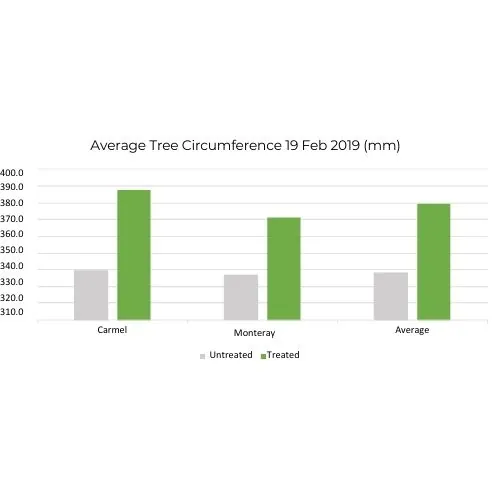Tottenham
Victoria
3012
AUSTRALIA
Victorian Almond Orchard
Location: Victoria, Australia
Case Study Period: 2016 to present
Crop: Almond Trees
This case study documents the Bactivate Program, its application and results at a successful Almond Orchard based in Victoria, Australia. The key objectives of the study were to:
- Determine if the Bactivate Program could deliver long-term economic benefit to the business
- Demonstrate quality improvements to the growth of young trees as well as to nut performance
- Improve yields
The Challenge
- Quantify and validate improved plant health
- Reduce the loss of nuts as a result of weather e.g. lack of rainfall, frost and prolonged heat events
- Quantify growth milestones in younger trees
Trial Areas
- Trial Area 1 – Mature almond trees planted in 2008
- Trial Area 2 – Young almond trees planted in 2016
Products Utilised
- Bactivate Boost
- Bactivate Seaweed
- Bactivate Plus Liquid
Results - Trial Area 1, Mature Almond Trees
During the season, Bioptiv staff visited the the orchard to commence data collection and visually observe and document the growth patterns of the trial areas/trees.
Observations were as follows:
- Improvements in canopy area were noted and photographed
- Pre-harvest nut counts were higher in treated areas
- Staff commented ‘anecdotally’ on the superior performance of the treated areas
Harvest was conducted in 2019. The results for the treated and untreated areas were provided by the farm’s management team. The gross margin analysis was then coducted by Bioptiv to quantify the economic value/benefit to the business.



Young Tree Results
Only tree circumferences were measured due to ongoing tree pruning management processes. Measurements were recorded in September 2018 and February 2019.
On average, the treated area showed a consistent 24% improvement in tree trunk circumference, translating into a higher product yield potential as well as improved capacity to withstand climatic extremes.
Other observations included:
- Improvement in treated canopy areas
- Pre-harvest nut counts appeared higher in treated areas
- Treated trees appeared healthier with better branch formation







